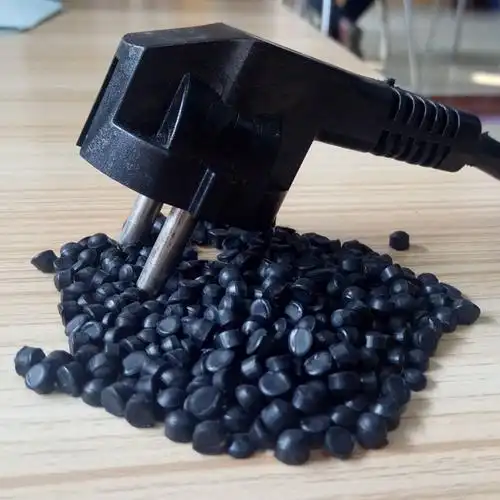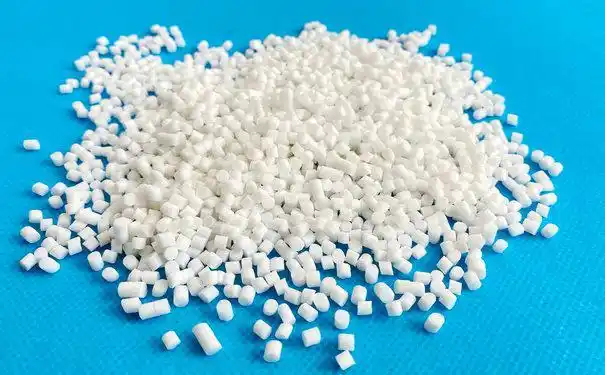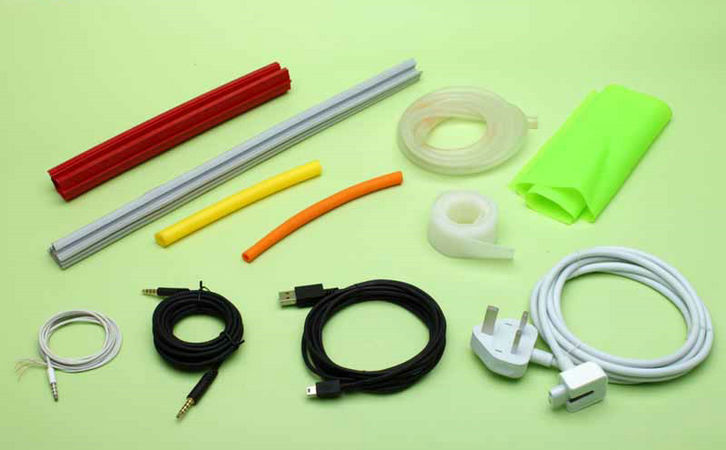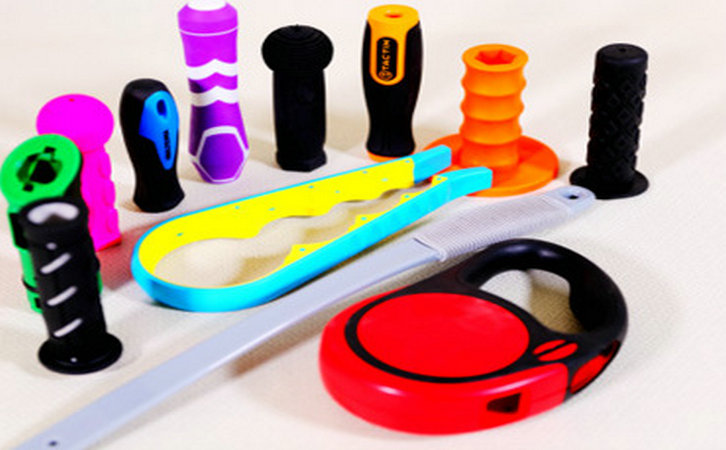In the field of TPE (Thermoplastic Elastomer) injection molding, gate delamination is a vexing issue that troubles many practitioners. I have been deeply involved in this industry for many years, having handled numerous TPE injection molding cases and dealt with quite a few gate delamination situations. Today, drawing on my experience and professional knowledge, I will delve into why gate delamination occurs in TPE injection molding and how to solve this problem.
I. An Initial Look at TPE Injection Molding and Gate Delamination
(A) Introduction to TPE Injection Molding
TPE is a type of polymer material that combines the elasticity of rubber with the processability of plastics. It can be processed into various shapes using conventional plastic processing equipment, such as injection molding machines, without the need for vulcanization. Injection molding is one of the most common processing methods for TPE materials. It offers advantages such as high production efficiency, high product precision, and the ability for mass production. During the injection molding process, molten TPE material is pushed forward by the screw of the injection molding machine, passes through the nozzle and the gating system of the mold, fills the mold cavity, and then cools and solidifies to form the desired product.
(B) Description of the Gate Delamination Phenomenon
Gate delamination refers to the occurrence of layer separation at the gate area of a TPE injection-molded product. Specifically, the product starts to separate at the gate, forming distinct layered structures. In severe cases, it can even render the product unusable. This delamination phenomenon not only affects the product’s appearance quality but also reduces its mechanical properties, such as strength and toughness, shortening the product’s service life.

II. Exploring the Causes of Gate Delamination in TPE Injection Molding
(A) Material Factors
Issues with TPE Material Properties
Uneven Molecular Weight Distribution: The molecular weight distribution of TPE materials has a significant impact on their processability and product performance. If the molecular weight distribution is too wide, during the injection molding process, molecules with different molecular weights move at different speeds, leading to uneven material flow at the gate and thus triggering delamination. For example, some low-cost TPE materials may have an undesirable molecular weight distribution due to production process limitations, making them prone to gate delamination during processing.
Poor Compatibility: TPE is usually a blend of multiple components, such as rubber and plastic phases. If the compatibility between these components is poor, during the processing, the components tend to separate, especially at the gate where stress is concentrated, leading to delamination. For instance, adding inappropriate plasticizers or fillers to certain TPE materials may disrupt the compatibility between the components, resulting in gate delamination.
Material Moisture Absorption
TPE materials have a certain degree of hygroscopicity. If the material absorbs moisture during storage or transportation, the moisture will vaporize when heated during the injection molding process, forming bubbles. These bubbles accumulate at the gate, disrupting the material’s continuity and causing gate delamination. I once encountered a case where a batch of TPE materials had been stored in a humid warehouse for a long time. As a result, many products exhibited gate delamination during injection molding. Upon testing, it was found that the material had absorbed moisture.
(B) Mold Factors
Unreasonable Gate Design
Excessively Small Gate Size: An excessively small gate size will cause the molten TPE material to flow through the gate at a high speed, resulting in significant pressure loss and generating shear heat at the gate, which can locally overheat the material and trigger delamination. For example, for thin-walled product molds, if the gate is designed to be too small, gate delamination is likely to occur.
Inappropriate Gate Shape: Different gate shapes have different effects on material flow and filling. If the gate shape is chosen improperly, such as using a side gate with an inappropriate angle, it may cause turbulence or stagnation of the material at the gate, increasing the risk of delamination.
Uneven Mold Temperature
Mold temperature has a significant impact on the fluidity and cooling and solidification process of TPE materials. If the mold temperature is uneven, especially if there is a large temperature difference between the gate area and other areas of the mold, it will cause the material at the gate to cool at different rates, generating internal stress and triggering delamination. For example, an improperly designed heating or cooling system of the mold, or local damage to the mold during use, may lead to uneven mold temperature.

(C) Process Factors
Improper Injection Speed and Pressure
Excessively Fast Injection Speed: An excessively fast injection speed will subject the molten TPE material to strong impact and shear forces in the mold cavity, making it prone to layer separation at the gate. Especially when processing high-viscosity TPE materials, a fast injection speed is more likely to cause gate delamination.
Insufficient Injection Pressure: Insufficient injection pressure will prevent the material from fully filling the mold cavity, potentially forming voids or weak areas at the gate, which are prone to delamination during subsequent use. Conversely, if the injection pressure is too high, it may excessively squeeze the material at the gate, also leading to delamination.
Excessively High or Low Melt Temperature
Excessively High Melt Temperature: An excessively high melt temperature will increase the molecular chain movement of the TPE material, reducing its viscosity and causing uneven material flow at the gate, thus triggering delamination. At the same time, an excessively high melt temperature may also cause thermal degradation of the material, affecting the product’s performance.
Excessively Low Melt Temperature: An excessively low melt temperature will reduce the material’s fluidity, requiring higher pressure to pass through the gate, which may easily cause stress concentration at the gate and trigger delamination.
(D) Equipment Factors
Wear of the Injection Molding Machine Screw
The screw of the injection molding machine will wear out over long-term use, increasing the gap between the screw and the barrel. This will cause the molten TPE material to flow back during screw conveyance, affecting the material’s uniformity and stability and making it prone to delamination at the gate. I once inspected an injection molding machine that had been used for a long time and found severe screw wear. After replacing the screw, the gate delamination problem was significantly improved.
Inaccurate Barrel Temperature Control
Inaccurate barrel temperature control will lead to unstable molten TPE material temperature, affecting the material’s properties and processing quality. If the barrel temperature is too high or too low, it will cause uneven material flow or stress concentration at the gate, triggering delamination.

III. Solutions to Gate Delamination in TPE Injection Molding
(A) Material Aspect
Select Appropriate TPE Materials
Pay Attention to Molecular Weight Distribution: When selecting TPE materials, try to choose products with a narrow molecular weight distribution. You can refer to the technical data provided by the material supplier to understand the material’s molecular weight distribution. Generally, TPE materials with a smaller polydispersity index (PDI) have better processability and product performance and a lower probability of gate delamination.
Ensure Material Compatibility: If plasticizers, fillers, or other additives need to be added to the TPE material, choose products that are compatible with the TPE matrix. You can conduct experiments or refer to relevant literature to understand the compatibility of different additives with TPE materials. At the same time, when adding additives, strictly follow the specified proportions to avoid excessive addition causing compatibility issues.
Properly Dry the Material
Before injection molding, thoroughly dry the TPE material. Generally, the drying temperature for TPE materials is 70 – 80°C, and the drying time is 2 – 4 hours. A hot air circulation drying oven or other equipment can be used for drying. The dried material should be used promptly to avoid re-absorption of moisture.
(B) Mold Aspect
Optimize Gate Design
Reasonably Determine Gate Size: Determine the gate size reasonably based on the product’s shape, size, and the properties of the TPE material. Generally, the cross-sectional area of the gate should be determined according to the product’s wall thickness and injection volume to ensure that the molten material can pass through the gate smoothly while avoiding excessive flow speed or pressure loss.
Choose an Appropriate Gate Shape: Select an appropriate gate shape based on the product’s characteristics and processing requirements. For example, for thin-walled products, pin gates or submarine gates can be used to reduce the flow resistance of the material at the gate. For products with complex shapes, fan gates or tab gates can be used to ensure uniform material filling.
Ensure Uniform Mold Temperature
Optimize the Mold Heating and Cooling System: Optimize the design of the mold’s heating and cooling system to ensure uniform temperature throughout the mold. Zoned heating and cooling can be used to control the flow rate and temperature of the heating or cooling medium separately according to the temperature requirements of different parts of the product.
Regularly Maintain the Mold: Regularly inspect and maintain the mold to promptly detect and repair any damaged parts, ensuring the mold’s sealing and heat conduction properties. At the same time, regularly clean the mold’s cooling water channels to prevent scale buildup and affect the cooling effect.

(C) Process Aspect
Adjust Injection Speed and Pressure
Reasonably Control Injection Speed: Control the injection speed reasonably based on the properties of the TPE material and the product’s shape. Generally, for high-viscosity TPE materials, the injection speed should be appropriately reduced. For thin-walled products, multi-stage injection speeds can be used. First, fill the mold cavity at a slower speed to avoid excessive impact on the material at the gate, and then fill it completely at a faster speed.
Precisely Set Injection Pressure: Set the injection pressure precisely through experiments and experience. The injection pressure should be determined based on the product’s wall thickness, shape, and the fluidity of the TPE material. During the injection process, closely monitor changes in the injection pressure and adjust it in a timely manner to ensure that the material can fully fill the mold cavity while avoiding excessive or insufficient pressure.
Control Melt Temperature
Accurately Set Barrel Temperature: Set the temperature of each section of the barrel accurately according to the recommended processing temperature range of the TPE material. Generally, the front section of the barrel should be slightly hotter than the middle and rear sections to ensure that the material can fully melt. At the same time, regularly check the accuracy of the barrel temperature to avoid large temperature deviations.
Monitor Melt Temperature: Use a melt temperature sensor or other equipment to monitor the melt temperature in real-time. If abnormal melt temperature is detected, adjust the barrel temperature or injection process parameters in a timely manner.
(D) Equipment Aspect
Regularly Inspect and Maintain the Injection Molding Machine Screw
Regularly inspect the injection molding machine screw and repair or replace it promptly if wear is detected. Generally, the service life of the screw is related to factors such as the hardness of the material, the processing temperature, and the screw material. During use, avoid subjecting the screw to excessive impact and wear, such as avoiding the introduction of metal foreign objects into the barrel.
Calibrate the Barrel Temperature Control System
Regularly calibrate the barrel temperature control system to ensure the accuracy of temperature control. A professional temperature calibration device can be used to calibrate the temperature sensors in each section of the barrel. At the same time, regularly check the working status of the heating and cooling elements to ensure their normal operation.
IV. Analysis of a Practical Case
(A) Case Background
An electronic accessories factory produced TPE mobile phone cases through injection molding. During the process, it was found that some products exhibited gate delamination, resulting in a high defect rate and affecting production efficiency and product quality.
(B) Problem Analysis
After a detailed investigation and analysis of the production process, it was found that the main causes of gate delamination were as follows:
Material Aspect: The TPE material used had a wide molecular weight distribution and had absorbed moisture during storage, leading to unstable material properties.
Mold Aspect: The gate size was designed to be too small, and the mold temperature was uneven, with the gate area being cooler than other parts.
Process Aspect: The injection speed was too fast, and the melt temperature was too high, causing excessive shear heat and stress concentration at the gate.
(C) Solutions
In response to the above problems, the following solutions were implemented:
Replace the TPE Material: A TPE material with a narrower molecular weight distribution and better compatibility was selected, and the material was thoroughly dried before injection molding.
Optimize the Mold Design: The gate size was enlarged, and the mold’s heating and cooling system was optimized to ensure uniform mold temperature.
Adjust the Process Parameters: The injection speed and melt temperature were reduced, and a multi-stage injection process was adopted to reduce shear heat and stress concentration at the gate.
(D) Implementation Results
After implementing the above improvement measures, the gate delamination problem of the mobile phone cases was effectively solved. The product defect rate dropped from the original 15% to less than 2%, significantly improving production efficiency and product quality.

V. Summary and Outlook
Gate delamination in TPE injection molding is a problem caused by multiple factors, involving materials, molds, processes, and equipment. To solve this problem, we need to comprehensively consider and analyze it from various aspects and take targeted measures. In actual production, we should strengthen the quality control of raw materials, optimize mold design and processing technology, regularly maintain and repair equipment, and continuously improve the stability of the production process and product quality.
With the continuous development of TPE material technology and the expansion of its application fields, the requirements for TPE injection molding technology are also increasing. In the future, we need to further deeply study the properties and processing characteristics of TPE materials, develop more advanced mold design and processing technologies, and optimize injection molding process parameters to solve more complex TPE injection molding problems and promote the wide application of TPE materials in various fields.
I hope that through today’s sharing, I can help everyone better understand and solve the problem of gate delamination in TPE injection molding. If you encounter other related problems in actual production, feel free to leave a comment and exchange ideas.
Related Q&A
Q: How to determine if TPE material has absorbed moisture?
A: You can determine if TPE material has absorbed moisture through the following methods:
Visual Inspection: Absorbed moisture TPE material may exhibit clumping or discoloration. If you notice obvious moisture traces or clumps on the material surface, it is likely that the material has absorbed moisture.
Drying Experiment: Take a certain amount of TPE material and place it in a drying oven for drying. Record the weight change before and after drying. If the weight decreases significantly after drying, it indicates that the material contains moisture, i.e., it has absorbed moisture.
Injection Molding Test: Inject the suspected moisture-absorbed TPE material and observe the product’s appearance and quality. If defects such as gate delamination or bubbles appear, it is likely that the material has absorbed moisture.

Q: When optimizing gate design, how to determine the appropriate gate size?
A: Determining the appropriate gate size requires considering the following factors:
Product Shape and Size: The more complex the product shape and the larger the size, the larger the gate size may need to be to ensure that the material can fill the mold cavity smoothly.
TPE Material Properties: Different TPE materials with different viscosities have different requirements for gate size. High-viscosity materials require larger gate sizes to reduce flow resistance.
Injection Process Parameters: Injection process parameters such as injection speed and pressure also affect the choice of gate size. Generally, if the injection speed is faster and the pressure is higher, the gate size can be appropriately reduced.
You can determine the appropriate gate size through experimental and simulation analysis methods, combined with the above factors. In actual production, you can also make a preliminary estimate based on experience and then adjust it through trial molding.
Q: If the injection molding machine screw is not severely worn, can it be repaired and continue to be used?
A: If the injection molding machine screw is not severely worn, it can be considered for repair and continued use. Common repair methods include surfacing and spraying. Surfacing involves welding wear-resistant alloy material onto the worn part of the screw and then processing and grinding it to restore the screw’s size and precision. Spraying involves applying a wear-resistant coating to the screw surface to improve its wear resistance.
When repairing the screw, choose a professional repair factory and an appropriate repair process to ensure that the repaired screw meets the quality requirements. At the same time, the repaired screw should undergo strict inspection and trial operation to ensure its normal operation. If the screw is severely worn, the repair cost is high, or the performance cannot be guaranteed after repair, it is recommended to replace it with a new screw.
Q: How to avoid other quality problems, such as flash and sink marks, during TPE injection molding?
A: To avoid other quality problems such as flash and sink marks during TPE injection molding, you can start from the following aspects:
Mold Aspect: Ensure the mold’s precision and sealing. Regularly inspect and maintain the mold, promptly repair any wear or damage to the mold. Reasonably design the mold’s venting system to avoid gas accumulation in the mold cavity, which can cause flash or sink marks.
Process Aspect: Optimize injection process parameters such as injection speed, pressure, holding pressure time, and cooling time. Adjust these parameters reasonably according to the product’s shape, size, and the properties of the TPE material to ensure that the material can fully fill the mold cavity while avoiding excessive pressure that causes flash.
Material Aspect: Select high-quality and suitable TPE materials and properly dry them. Avoid impurities or moisture in the material that can affect product quality.
Equipment Aspect: Regularly inspect and maintain the injection molding machine to ensure its normal operation. Check whether parameters such as the clamping force and injection volume of the equipment meet the requirements to avoid quality problems caused by equipment issues.





